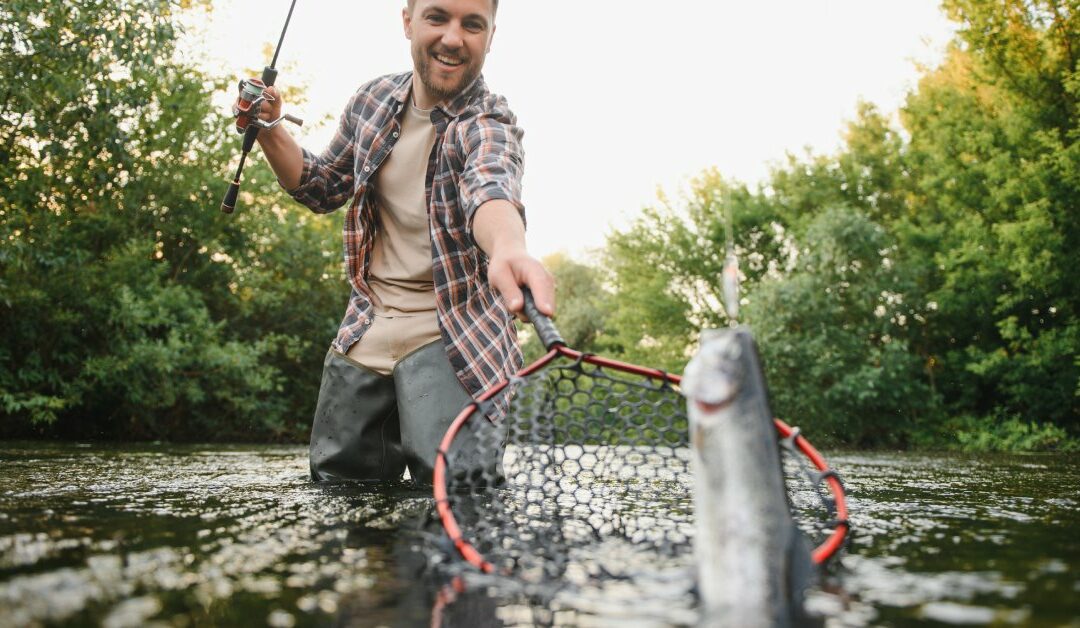Woodland ecosystems control stream conditions for fish numbers, bug emergence, and water purity, all factors anglers rely on for productive outings. Forest vitality directly influences aquatic zones where trout and game fish flourish. Outdoor enthusiasts appreciate the calm of river fishing, where Stephen Gleave Ancaster demonstrates how patience and timing enhance both environmental respect and angling success. Trees moderate stream heat through overhead cover. Root structures block erosion, keeping water transparent. Rotting plant material nourishes water bugs that fish eat. This woven bond between timberlands and fishing grounds means capable fly angling requires an ecological grasp reaching past water alone.
Canopy shade keeps water cold
- Developed tree tops shade creeks, cutting water heat by 5-10 degrees through hot months, keeping ideal spans for frigid-water varieties
- Cleared stream stretches suffer heat strain where exposed flow warms past bearable points, forcing fish to desert formerly rich zones
- Dawn and dusk shade designs move across seasons, changing when fish hunt most eagerly in separate stream portions
- Targeted timber cutting beside waterways wrecks heat control even when nearby woods stay whole
Frigid-water fish like trout, salmon, and char want particular heat bands for living and breeding. Brook trout favour flows between 50-65°F, while heat topping 70°F sparks strain and death. Creeks moving through whole forests hold cooler temperatures than open-top options. This heat gap decides which flows contain workable fish groups worth chasing. Season heat shifts sway bug emergence designs that push feeding conduct. Grasping how the forest blanket touches these timing designs aids anglers in forecasting hatches and picking the fitting fly designs matching obtainable meal sources.
Leaf litter feeds aquatic bugs
Woodland leaf trash dropping into creeks gives base power for the water food chains. Dropped leaves break into tiny particles that small creatures eat. These small creatures turn into meals for fish. Without this land input from nearby woods, the creek output drops sharply, cutting fish numbers and growth speeds. Land bugs blown or falling from trees add to water bug groups. Beetles, ants, hoppers, and worms give major calories for chance feeders. Through hot months, land bugs might form 30-50% of trout meals in wooded creeks. Anglers casting land designs near drooping branches grab this forest-given meal source.
Tree roots stop erosion
- Root webs bind dirt, blocking streambank breakdown that brings silt, muddying flow, and burying spawn rocks
- Woodland floor plants soak rainfall, cutting runoff speed that otherwise scrapes stream paths and rock banks
- Wood rubble from toppled trees builds pool-rapid chains, raising home complexity and water oxygen levels
- Fungal webs reaching from tree roots lock soils across watersheds, guarding water purity miles below
Flow transparency decides fly fishing wins since sight hunters like trout need spotting prey and fake flies. Silt-heavy flow from broken banks cuts visibility, removing sight-feeding chances. The forest guard upstream keeps the rock clean where eggs grow. Silting from cleared zones fills rock gaps, choking growing eggs and dropping recruitment. Grasping these links shows why rich fishing grounds need a whole upstream forest blanket.
This season burst kicks raised small creature action before the cold. Sharp anglers spot this output window casting hard through fall months when meal richness lifts fish feeding strength. These natural links decide where fish dwell, what they consume, and when they hunt most eagerly. Anglers spending time learning forest-stream bonds raise win rates while building conservation values guarding fishing grounds for coming generations.

